Cover Matters is a new monthly feature in which we examine the medium that is first contact between a reader and a book: the cover. This feature will dedicate more separate space to a topic that has always intrigued, irked, and befuddled us. We will be talking about issues such as whitewashing practices, covers in poor taste, misleading or completely inaccurate covers, clichéd covers and, of course, covers that manage to get it right. We plan on having guests (bloggers, authors, cover artists, and publishers if possible) join us for these monthly pieces, with the following question in mind: Do covers matter?
In this first issue, we will be examining the practice of whitewashing of covers. We begin by taking a look at a few examples of Whitewashing over the ages, following up with an examination of the rationales justifying this practice. We proceed to talk about problems of whitewashing, as this form of discrimination has much broader implications in not only the publishing and book world, but in the real world as well. We finally conclude the post with a call for awareness and a guest article by the eloquent and passionate Ari from Reading in Color.
Introduction:
In books, to whitewash is to use a white representation for a character that is not white. If you have been anywhere near the wonderful world of book blog internetting for the past few months you are probably aware of two major cover fiascos, in which publishing house Bloomsbury used white models on covers to represent non-white protagonists. After the huge online outcry the covers of Liar by Justine Larbalestier and of Magic Under Glass by Jaclyn Dolamore were retreated and replaced:
As much as we, and probably the rest of the world (as some of the comments we have seen point to), would like to think that these are only but sporadic, isolated incidents, unfortunately this is not so. The practice has been going on for a long, long time, and it is not confined to one genre or one race, nor is it solely an American issue, either:
Example 1: Octavia Butler’s Dawn
Dawn is the first book in Octavia Butler’s Xenogenesis series and her protagonist Lilith Iyapo (the standing woman in the cover to your left), is described as “an imposing black woman” (quote from NK Jemisin’s article). The first cover published in 1987 was replaced with the cover on the right in the 1997 edition, 10 years later.
Example 2: Ursula Le Guin’s Earthsea Quartet and Powers
Ursula Le Guin is a Fantasy author known for writing multiracial characters. Her Earthsea quartet for example features dark-skinned characters, however early books depict white-skinned ones on the covers.
Similarly, the arc of her 2007 release Powers, which features a POC as the main character, was distributed with the cover on the left. Thankfully, the publishers fixed the mistake in time for the release.
Example 3: LA Banks’ Crimson Moon Books
The Crimson Moon books features a protagonist who is half-creole, half African-American and the four covers in the series are completely all over the place in portraying said protagonist. The latest cover is the only one that comes close to Sasha’s honey, darker skin tone.
Example 4: Cherry Cheva’s She’s So Money
The protagonist of this 2008 book is Asian (Thai to be more precise).
Example 5: Esther Friesner’s Sphinx’s Princess
This 2009 novel and 2010 sequel, about Nefertiti, the Egyptian Queen has a very white, European looking model on its covers.
Example 6: The Dragon and The Stars Anthology
This anthology edited by Derwin Mak and Eric Choi, and featuring fantasy, myth, and science fiction stories by and about ethnic Chinese writers from around the world – including Hong Kong, the Philippines, Singapore, Canada and the United States….and it has a European Dragon on the cover. (Never mind the fact that the book isn’t even about dragons)
Example 7: German cover of NK Jemisin’s The Hundred Thousand Kingdoms
The protagonist of this fantastic novel is thus described:
I am short and flat and brown as forestwood, and my hair is a black-curled mess. Because I find it unmanageable otherwise, I wear it short. I am sometimes mistaken for a boy.
So who is the person depicted in the cover of the German version?
According to the author, the German editor has declared that the woman in the cover is not meant to depict anyone in the book. It is a random person. She has been advised:
by other pro authors that this sort of thing — art that’s got nothing to do with the book — is common among foreign publishers, who go in more for “symbolic” rather than “representative”/”realistic” like us USians prefer.
We remain baffled as to how a blonde, random woman in lieu of a dark-skinned woman could “symbolise” anything other than racism. This is a choice and a choice that brings us to the point of this post.
“Explaining” Whitewashing
The most dominant rationale we have seen for justifying whitewashing of covers (and movies, etc) is the simplistic argument:
We have a few problems with this argument. First, we should disclose that we do NOT have any hard data (although if anyone does have access to sales figures, we’d love to hear from you), and as such, we must deal with largely anecdotal and other secondary evidence.
That said, it seems to us that the argument that the statement, “PoC Covers Don’t Sell” seems more than a little disingenuous. First off, there aren’t very many books with PoC representation on the covers out in the market to begin with! Check out one informal survey done by a blogger cited at Racebending.com, in which a paltry 2% of 775 YA books looked at had PoC on the covers. This is a small sample, but from our experience, it feels pretty representative. Go into the YA or SF/F section of your book store and take a look at the covers. We’re betting about 2% of those covers depict a PoC (if that). In this sense, yes, PoC covers don’t sell…but that probably has something to do with the fact that there aren’t any significant number of them out there. And while we’re on the argument that covers with PoC on them do not sell, take a look at the July issue of Italian Vogue. The issue, in the midst of a huge slump in advertising and sales for fashion magazines, sold out completely in the USA and UK, causing a rush second printing of 40,000 copies. This hot-selling, record breaking issue was the “Black Issue” and only featured black models. For a relatively small circulation magazine, this is huge news. While we know that matching book publishing to magazine publishing is an apples to oranges comparison, we do think it’s an interesting trend to at least note.
Following and related to the argument that POC-cover books will not sell, the second major argument we have seen in the rationale for whitewashing covers is:
There’s a whole lot wrong with this argument. First, it assumes that the majority of “readers” are white. We live in a very diverse world – in the United States alone, over 38% of the population is a race other than white (according to the American Community Survey Demographic & Housing Estimates from 2006-2008, and separating “Hispanic/Latino” from the “white” classification). Demographics aside, this argument is also flawed as it assumes that readers can only relate to books about characters that are similar to themselves. What does that say about books with vampires or werewolves or blue aliens on the covers? Is the message, then, that readers can eagerly relate to these covers and these different species’ of characters – but cannot relate to something so removed as another human of a different race? What does this say of PoC audiences that read books with predominantly white protagonists? This argument implies that they either have more mental fortitude and adaptive prowess than their white brothers and sisters, or that their being able to relate to white characters simply isn’t as important than whites being able to relate to non-whites. Any way you cut it, it’s insulting to all those involved.
Besides the Young Adult category/genre, we’ve seen this argument of non-relatability applied especially in the romance field – in particular, with African-American Romance. Attempts at “Crossover Marketing” (Marketing African-American Romance in the Romance section as opposed to segregating it to the A-A Section) were met with this brand of criticism, for example from the Arlington Morning News (from aalbc.com):
In an Arlington Morning News story about crossover marketing of African-American romances, a magazine publisher indicated that the covers, which show Blacks in Afrocentric styles, might make white readers uncomfortable.
“There are many people who might see the covers of the books, which often feature women with braids or short kinky cuts and men with clean-shaven heads and dark skin, as being too black and in-your-face” She went on to suggest covers without people.
As we’ve said before, this is a problem that pervades the publishing industry, across genres. Again, the same assumption presupposes this reporter’s argument (a white person is not too white for PoC readers, but PoC characters are too “colored” and “in-your-face” for white readers). The point is, these sorts of assumptions about white and PoC readers are insulting to ALL involved – to both persons of color, and white readers alike.
Problems & Implications of Whitewashing
The problems inherent in whitewashing of covers extends much further than a mere book. The practice is indicative of a larger problem that is prevalent in the publishing world, and in our own world, as readers and humans. Even before a cover is placed on a book and may be whitewashed, there are numerous obstacles and problems that face PoC writers. You may have noticed that many books with PoC protagonists are written by white authors, especially in the YA arena. In fact, the whole impetus for our “Cover Matters” posts were two such books – both Liar and Magic Under Glass are books with PoC protagonists, and are written by white authors. According to statistics taken from the Children’s Cooperative Book Center at the University of Wisconsin-Madison, this trend is the norm:
We want to make it very clear that we think that it is TOTALLY awesome that white authors write about POC. We want diversity! We live in a diverse world, we want diverse characters that represent the real world! Justine Larbalestier has written a great article about why her protagonists aren’t white, that we encourage everyone to read.
However, the discrepancy between books written about PoC and by PoC is interesting, and also worthy of note. Take, for example, Mary Anne Mohanraj’s experience with “The Red Sari” phenomenon for her Bodies In Motion cover. Ms. Mohanraj explains:
My original cover was an ‘artsy, literary’ cover, but under market pressure, the cover was changed to an image of a brown-skinned woman with wet skin, wrapped in a red sari. I had heard that this was common for the covers of S. Asian books, so I eventually decided to do some research and see if that was actually the case.
Ms. Mohanraj put together a presentation of her findings for the 2008 SALA Conference in San Francisco, which you can read about online here: South Asian & Diaspora Book Covers.
For another perspective, we’d also like to call your attention to a post by POC author Neesha Meminger, “Who Gets to Represent”. Of her experiences, Ms. Meminger says:
When white authors write characters of colour, their careers are not hindered. In fact, they may get the traditional pat-on-the-back response whenever the privileged represent those they have privilege over. When authors of colour write books featuring white protagonists and all-white casts, their careers are not negatively impacted. I am not applauded or thanked when I write white characters in my books because I am expected to.
Certainly a valid point. She then goes on to say:
When authors of colour dare to feature protagonists of colour, or people their books primarily with characters of colour, our challenges to getting published are vast. If we do somehow manage to get published, our books are “educational,” or about race and “other”-ness — and we are almost never lead titles. Many of us struggle to get a second book published (Mitali Perkins waited over ten years to have her second book published), and to get the marketing and publicity support we need to reach our audience. (This last bit is probably true for the majority of authors, regardless of race or background, but it is definitely compounded for PoC).
So, What Can We Do?
Whitewashing of covers is a problem. It is a concrete, visual representation that can be held in our hands, of a much larger moral and social problem, namely: Racism. If you think that we are exaggerating, that covers don’t matter, that what matter are the stories inside a book, that this is the 21st century after all and we all have come a long way, perhaps you should consider the following:
– Most of the examples given above happened in the past 5 years, some of them are happening right now.
Whitewashing is not something that is relegated to the book industry either to wit:
– In 2008, L’Oréal was accused of Whitewashing Beyonce on their advertisement on an issue of Elle Magazine.
– The 2010 movie Avatar: The Last Airbender, which is based on a Nickelodeon’s cartoon and is “set in a fantastical Asian world,” depicting a multicultural world and multicultural characters. However, the casting of the movie is largely Caucasian – for the heroes, that is. The villains, however, are represented by PoC.
– Last Friday it hit the news that Gerard Depardieu will be playing the role of Alexandre Dumas in a new movie about the writer who was of mixed race and suffered racism when he was alive. Gerard Depardieu had to “darken his skin and wear a curly wig” to play the role.
And the list goes on.
So, the question we need to ask ourselves is this: what can we do about all of this mess? There is no easy solution for this of course – you can’t make a racist, not racist. You can’t make people who think they won’t relate to a PoC in a cover of book or a magazine, or in the lead role of a movie change their minds.
Where to start?
Awareness is important. Be aware of cover issues, for example, and don’t deny that there is a problem (i.e. “marketing departments are so busy, maybe this is not a racist issue at all”). Be aware that there is such a thing as White Privilege, and what exactly it means (check out this article from The Story Siren on her experience with White Privilege). There will a whole bunch of links at the end of this article as well, and we highly recommend you read them.
If you want to actively do something, you can start by reading more books by PoC, about PoC and with PoC on the covers – and the numbers will start to change. Check out the PoC Reading Challenge or join the Readers Against Whitewashing Facebook Page.
Publishers: if you are publishing a book about a PoC, OWN IT. Like for example, Simon and Schuster and Angry Robot are two publishers that are publishing great books about and by PoC with great covers too.
The truth is this: if we just sit back and let it pass, we will still be seeing whitewashing in the 22nd century and beyond.
And this is what we have to say on the subject; we admit we got carried away. The more we read, the more interested we became, and the post ended being more of an essay than anything else. We have learnt a lot in the process, we might even have shed a tear or two reading articles and watching videos at Racebending ( a site we highly recommend you all to check it out, it is eye-opening).
To finalise, we would like to give the floor to Ari, from Reading in Color. She is the teenager who wrote that amazing letter to Bloomsbury when the Magic Under Glass cover debacle occurred, and her words have inspired several articles and blogs about the subject. We asked Ari: Do Covers Matter?
Covers Matter
A huge thank you to Ana and Thea for inviting me to express my opinions here at The Book Smugglers. Like most bloggers I love to talk, rant, discuss and listen 🙂 so I’m excited for this new feature they will be having called Cover Matters because it’s an important topic and one that we need to talk about.
I think YA book covers (I mostly read YA so I can’t compare my thoughts on this subject to adult fiction book covers) have lots of problems (skinny models vs. overweigh models, boys vs. girls, headless people, etc.) However, in this post I want to focus solely on whitewashed covers because they are the most distressing of all covers.
If you follow the book blogging world, especially the YA blogosphere then you have undoubtedly heard all about the Liar and Magic Under Glass cover controversy. A brief refresher: Bloomsbury USA whitewashed both covers of these books. That means that, although the books were about African American (in Liar the main character, Micah is biracial) or “dark-skinned” (the main character, Nimira in Magic Under Glass is described as such) girls, the covers had white models on them. This is wrong, pure and simple. The whitewashing of covers has been an eye opener to many in the blogging community.
The message a whitewashed cover sends is that POC are worthless, that we mean so little that even if a book is written about us, we can’t be on the cover because the image of a POC won’t sell. Even if a book is about a certain topic, the cover can be completely different from the story as long as it sells. Now I want everyone to step back and think about this. Are you back? Is that not completely ridiculous? For all the “color blind “folks, let’s take color out of the equation. It would be like having a vampire on the cover of a book about a witch or a dog on the cover of a book about a horse, etc (except it’s 100x worse to whitewash a cover). Wouldn’t you be mad or at the very least puzzled? POC can read about white people, that’s “normal” and expected. But ask some white people to read about a POC and it’s a problem, “there aren’t many books about POC in my favorite genre” or “I don’t see color so I shouldn’t have to alter my reading habits.” I admit that I always thought it obvious as to why whitewashed covers are wrong, but I received a rude awakening when I started reading comments on other blogs that said things like “so?” or “I don’t really care because I don’t see color. I just read the story if it sounds good.” This is troubling for a few reasons.
First, the idea of “not seeing color” is ridiculous and sad. It’s sad because we live in a colorful world, with people who are all different shades. If you don’t “see color” then to me, you are saying I don’t recognize the beauty of all people who are of different hues. People come in all different colors and we should see this beauty and appreciate, not ignore it. If you’re white, you are colorless to a certain degree but that’s not bad! I certainly don’t think white people should feel bad for being white or pale (ugh don’t get me started on tanning! Tanning beds are one of the creepiest things in this world), everyone should be accepting of their own skin color as well as others.
I understand the intention behind “not seeing color”. This mindset states that you only judge a book based on the story within the pages, not on the cover. The idea being that you will read any book that appeals to you and that therefore you are not narrow-minded because you would read a book about a person of color (POC) it just hasn’t been written yet. As if, once a book is written in your favorite genre and it’s about a POC, it will magically appear in your local bookstore or library and you will pick it up. Naturally, this is completely ridiculous. I’m willing to bet that those who claim to be color blind own books with mostly white faces on the cover. This may not be intentional on their part, but since they don’t see color, they limit themselves from searching for books that have color in them and they don’t protest the lack of color and cultural diversity in books.
There are not many YA books out there about people of color so you have to make a conscious effort to look for them. When I was a young reader, I just read the most popular books, the ones everyone was reading (Beverly Cleary, Harry Potter, etc.) but I realized something really fast: the popular books rarely involved people who looked like me, or who came from different cultural backgrounds than the white norm. It wasn’t fair. I wanted to see more books about POC, but when I wandered the shelves of my local bookstores, I didn’t see very many, maybe one or two. This bothered me for a while, but I didn’t decide to do anything till I was older, getting ready to start high school. I started to do research. I looked up titles and authors who were/wrote about POC and armed with this knowledge, I headed back into bookstores. If the books weren’t there, I asked for them to be ordered. Oftentimes these books were in obscure locations that I wouldn’t have thought to look, more often than not though, my bookstore just didn’t carry them but they were always happy to order them for me. If I was color blind, I never would have done this. I would have kept reading the books that I saw prominently on display in my bookstores and libraries, books that did not have POC on them and/or were not about POC.
POC do not get on covers. I suppose this is because somewhere publishing companies have statistics (or have at least noticed trends) that show that people are more likely to read about white people than POC and that covers with white people sell better than covers with POC. This places the blame of the lack of POC on covers solely on the consumers. If we start buying more books with POC on the covers, publishing companies will put more of them on the cover and publish more books about POC. Also, why do some white people not want to read about POC? It’s important for families and teachers to talk about the importance of having tolerance for other cultures. Tolerance is developed from reading about cultures different from your own. BUT if we consumers don’t see many books with POC on the cover, we will continue to buy books with white people on the cover (and if we don’t see color, we won’t give this a second thought) and a whole generation of leaders will have grown up without reading about and respecting other cultures and then it’s the publishing companies fault. It’s a vicious cycle and instead of pointing fingers and blaming the publishing companies or the readers, let’s talk about how we can change the minds of both publishing companies AND readers. We can do this by buying books with POC on the cover and books that are about/by POC. This will send a message to publishing companies, that we don’t care who is on the cover, as long as the story is good, therefore, publish more books about people of color. If your book blog is dedicated to a certain genre, then start making an effort to read and review books in that genre that feature POC. We can send messages to our fellow readers by talking up the books about/by people of color, if you have a blog, you have a computer, so there are no excuses for not being able to find books about POC (Google anyone?) Reviewing books about POX does not mean we praise every single book about/by a POC. There is no free pass just for writing about a diverse group of characters (especially if they aren’t authentic), we should hold all books to the same standards; are they well written? Entertaining? Meaningful? It’s just an added bonus when the cast is multicultural.
Covers matter because they are the first thing (or one of the first things) that attracts us to a book. When you see a cover that is so unique, so breathtaking, laugh out loud funny or just plain weird, that gets your attention and draws you to the book. As a POC, seeing a cover with a POC on it, draws me in. I will pick up ANY book with a POC on it (and then read the summary to see if I actually want to read it) because sometimes I get tired of reading about blondes, brunettes,and feisty redheads (*eye roll* Why can’t you be a feisty blonde? or black-haired girl?) with blue, green or hazel eyes. People of color deserve to see images of themselves reflected on book covers, especially young readers. As children and teens of color grow we need to see ourselves reflected on book covers and in books to re-affirm that we are special and valuable because we don’t always get that reassurance from TV/movies, magazines or those around us which provides a crushing blow to self-esteem. I am one of many young people of color who at one point or antoher wanted to be white and cursed the fact that not only do I look different from everyone else, but I rarely see images of people who look like me in the media. That is a sad reality and conclusion to come to and I sincerely hope that in a small way, my blog along with others will help promote the works of POC enough that the next generation (regardless of skin color) will grow up with POC on book covers and will pick up the book without giving it a second thought except being excited about the story on the pages. When young readers (including myself) see POC on book covers, we get a boost of self-esteem and feel triumphant, happy in the knowledge that people will be walking around with a POC on a book cover (for a little while at least). They are seeing in color and will come to realize (if they haven’t already), that we all have some common experiences and trials regardless of skin color. It’s an eye-catching cover indeed that can convey all that with just one image of a POC.
People have already stepped up and begun working to promote books by/about POC. Check out Color Online, theHappyNappyBookseller, Crazy Quilts, Multiculturalism Rocks!, Gal Novelty, Asia on the Heart,World on the Mind, Bookish Blather, Good Books & Good Wine and the POC Reading Challenge. Oh and if you stop by my blog that would be pretty cool too and maybe, just maybe, it would be a great resource 😉
Thank you, Ari!
Referenced Articles/Links for Further Reading:
N.K. Jemisin’s take on her German Cover
Justine Larbalestier’s article on the creation of book covers
Racebending.com’s take on whitewashing in YA novels
The Guardian UK’s article, “Fashion world stunned by Vogue for black” by Sarah Mower
American Community Survey Demographic & Housing Estimates (2006-2008)
Justine Larbalestier’s article on why her protagonists aren’t white
An Analysis of South Asian & Diaspora Book Covers by Mary Anne Mohanraj
Neesha Meminger’s article on writing and publishing as a POC author, “Who Gets to Represent”
The Happy Nappy Booksellet thank you to Simon and Schuster’s POC covers
A Centralised article about Avatar: The Last Airbender from Racebending
Ursula LeGuin’s article on Slate.com about Whitewashing Earthsea
BBC News’ article about Alexander Dumas biopic and ensuing outcry




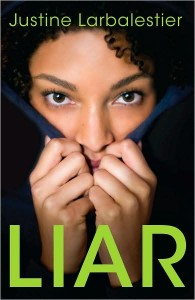




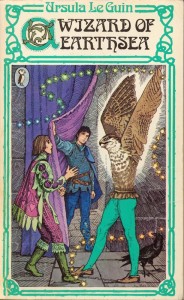


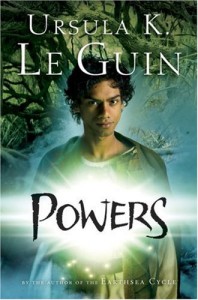
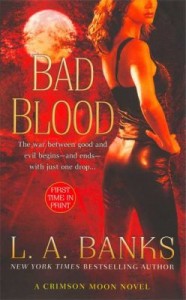





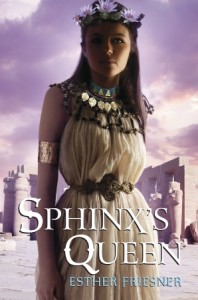
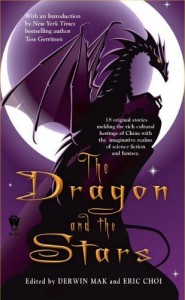

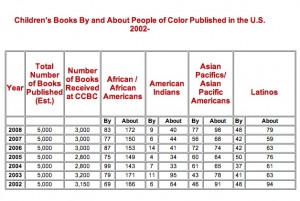
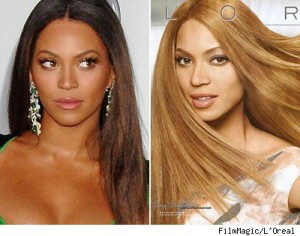
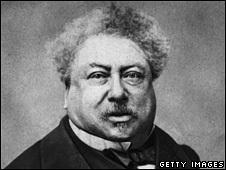










95 Comments
TJ
February 26, 2010 at 12:29 amI can only say: Bravo, this post is an amazing consolidation of some very valid points on an important topic. I’ll probably use it as a reference in the future.
Sam Sykes
February 26, 2010 at 4:21 amA well-made post on an important issue in publishing, I should say.
I can only comment on Avatar: The Last Airbender, but I don’t think the whitewashing there is driven by any malice or latent racism so much as it is driven by the fact that M. Night Shyamalan is the greatest crime against cinema since Xanadu.
KMont
February 26, 2010 at 4:27 amThis is the first time I’ve seen the new Magic Under Glass cover. It’s wonderful! The woman on the front is much more interesting this time. The other cover was too, obviously. It did work to draw attention, but the new one is so much better and every BIT as interesting! And more appreciated for its honesty.
I’ll have to come back to finish reading (getting ready for work), but so far this is very impressive, ladies.
Jenn Bennett Phantasmic Fiction » Blog Archive » Whitewashing Book Covers
February 26, 2010 at 6:15 am[…] The Book Smugglers Cover Matters post […]
April (Good Books & Wine)
February 26, 2010 at 7:29 amAHHHHHHHHHHHHHHHHHHH
Jump jump jump! I got a shout out at the end.
-calms down-
I have to say this was fantastic food for thought. Whitewashing is wrong, no question about it. To whitewash is to devalue people of color which is messed up.
I honestly feel bad for those who haven’t read the delicious words of Zora Neale Hurston (what up TeaCake) or the lyrical words of Sherman Alexie.
Honestly, I can’t wait to pick up the new beautiful Magic Under Glass with it’s gorgeous cover, tell me that’s not fierce.
Ari’s blog is absolutely a must read. She has me dying to read several books including The Rock And The River and A Wish After Midnight, as is the blog of Ah Yuan, who gets so excited over books it is contagious.
When I think of whitewashing, I tend to think a little bit about the practice of Black-Face, where actors would put on make-up to make their skin darker and basically caricature people of color. I suppose I think of this, because instead of erasing PoC, it creates a gross misrepresentation. Bamboozled, the Spike Lee film, is pretty illuminating on this topic, really made me think.
Also a blog spotlighting POC which I’d like to point out is A Striped Armchair she’s made the commitment to making 50% of her reads works by PoC authors. I think I may follow her example and do this in 2011 (gotta get through the books I own first).
Anne M Leone
February 26, 2010 at 7:40 amA really thorough summary of the issues in whitewashing covers. Great post, thanks!
janicu
February 26, 2010 at 9:11 amI’m in awe at the amount of work and research you did for this post. I have to admit, I am SO HAPPY when I read about a character that is like me – half asian. That’s sort of rare, and I’m happy for them to even be a side character. I don’t recall seeing one on a cover, which is sad because I would buy that book SO fast. I agree with Ari who says “we live in a colorful world, with people who are all different shades”. It would be nice if one day it was normal to have a mix of races on covers, not predominantly white covers.
KMont
February 26, 2010 at 9:45 am*Go into the YA or SF/F section of your book store and take a look at the covers. We’re betting about 2% of those covers depict a PoC (if that).*
This is certainly true of one of my local stores, and likely all the others because they all sell the same books, right? But I did exactly as you say above and purposefully looked one day after yall first started addressing this issue. And you’re right.
On your points of can whites relate to non-white characters and your words, “Any way you cut it, it’s insulting to all those involved.”
YES, it really is insulting. It also unnecessarily widens a gap between whites and non whites that doesn’t need to be there. That many whites don’t even WANT to see there!
On African AMerican romances – uh, just because I may not want to read one doesn’t mean I’m “uncomfortable” with African American men and women being on them. I CAN look at the covers. I don’t like to read horror either, but I don’t shun those covers just because they clearly depict a horror theme. I just don’t want to read them. End ‘o story. Now – should I ever get a really great rec for one or the other, I’d try them, it’s possible.
On white authors writing POC characters vs. POC writing POC characters: I’m never sure what is the RIGHT answer here. As you say, the points above are valid, but I’ve seen some very strong negative reactions to white authors writing POC characters in the last year or so – or the whole issue of appropriation in general in fiction. I really need to read up more on this issue, so I’ll just admit that I don’t fully understand it yet or what is the right way in its case.
*Publishers: if you are publishing a book about a PoC, OWN IT.*
I agree! Publishers should use their positions to be a leader in influencing a positive outlook and CHANGE for the way POC are represented on covers. If those books, with POC characters as protagonists, etc., were SO loved by editors – enough to be published – yes, own it. Support that book to the fullest and give it a cover that accurately portrays the characters within.
And yall may think this became an essay, but it was a damn good one.
Diana Peterfreund
February 26, 2010 at 10:07 amFWIW, it never would have occurred to me that the cover of Bleeding Violet depicts a POC. However, I have ALWAYS been able to tell that the LA Banks novels did. (I think you are showing some reshoots — her original covers (which I own) are quite clear the girl is black.
The POWERS cover is also a much BETTER cover than the white guy on the original, which unfortunately cannot be said for all the redos.
And as for Avatar, though I am disappointed with the casting of the other leads (seriously, the though of Jackson Rathbone playing the awesome Inuit Sokka makes me sick to my stomach), I’m so so so excited to see Dev Patel rock out as Zuko. I saw the poster of his as Zuko surrounded by fire at my local cinema the other day and I wanted to steal it off the wall and take it home with me. And I’m not one of those crazy people who crushes on Zuko. I always liked Sokka. But I also like Dev and think he’s PERFECT for this role.
katiebabs
February 26, 2010 at 10:20 amThis post is one of the best ones I have ever read by you ladies and you deserve an award for this.
Ana
February 26, 2010 at 10:46 amTo all who commented so far – thank you!
Diana – That is funny because my perception is the exact opposite of yours. I was always able to see the Bleeding Violet cover depicting a PoC and the LA Banks always looks very white to me. However I do own the Bleeding Violet one and not the LA Banks. These images we got are exact copies of the ones at the author’s website and we posted them because Thea owns the books and was always irked at the difference between the description inside and the figure on the cover. I don’t know if they are reshoots. And if they are – then..it just proves our point?
As for Powers – Yes I totally agree that the redo is better as well. As for the rest of the redos not being, well. I think that on the great scheme of things, when it comes to this particular discussion, I’d rather go with “accurate” than “better”.
Lee Harris
February 26, 2010 at 12:12 pmYou see – this is a great example of what makes The Book Smugglers one of the best book blogs out there!
The cover of a book is the first shot in the publisher’s arsenal – the first chance to get a potential new reader to pick up a book with a view to taking a chance on it. It needs to be striking, it needs to shout out “look at me”, but like all forms of marketing, it needs to be representative of the product it’s promoting. If it fails that simple test, it fails the reader and it fails the author. And I would also argue it’s potentially misselling, if not downright fraudulent.
I’ve never understood the rationale that readers don’t buy books with PoC on the cover, or that said books must be aimed at readers who are themselves PoC, but operating on this assumption merely prolongs the practice, and promotes racist attitudes and assumptions.
I’m sure things will get better in time – children today generally have a far healthier outlook than in previous generations. For example, when working through a book about the human body with my daughter, there was a section promoting and celebrating the differences in people, and one of the exercises was to name the differences that could be spotted in a picture of a group of 4 children.
My at-the-time 4-yr old spotted that some people had round faces, some long; some had blonde hair, some dark; some had curly hair, some straight; some had blue eyes, some green; some were tall, some short.
She didn’t point out that two of the four had coloured skin, and 2 were white. When I pointed it out, she told me “Yes, Daddy, but I didn’t think it was important”. It is important, of course, but she didn’t have the verbal dexterity to say what she was actually thinking: that skin colour wasn’t important to someone of her age, as it was not something she used to differentiate between people of her acquaintance – it matters, but it doesn’t matter.
The children of today will have a great deal of these problems sorted by the time they’re our age, but until then we need to ensure that we take a leaf out of their books. Or better still, a cover.
Blogs like this help.
Zetta Elliott
February 26, 2010 at 12:31 pmI found your post through Neesha’s blog–it’s excellent! I just posted something about whitewashing on The Huffington Post, but will head there now to add a link to your site in the comments…
Karen Mahoney
February 26, 2010 at 1:00 pmI bow down to you once again, Smugglers. 🙂
Thank you for taking the time to put this incredible article together. BLEEDING VIOLET is one of my favourite YA covers in recent months – the first time I saw it I almost jumped up & down with excitement. Heh. I am silly like that. But it seemed to me like a big step forward & so important that a high profile YA publisher should give a paranormal release such a cool cover.
Article On “Whitewashing” « Lauren Leto
February 26, 2010 at 1:14 pm[…] company redos a cover so that a black character is made to look “less black”. Read it here. Tagged with: injustice, nerding, […]
Aishwarya
February 26, 2010 at 1:28 pmIt’s odd, but on that third L.A Banks cover (Undead On Arrival) I actually wondered if the protagonist was Asian before I read the description above.
This is a great post!
Jess
February 26, 2010 at 1:41 pmThis is such a troubling issue. As you sum up, it degrades everyone involved. I haven’t read many books about/by PoC, which I mean to change. (I have WENCH, HOTEL ON THE CORNER OF BITTER AND SWEET, and THE HELP on my TBR.) I was first alerted to this by Justine’s blogs about LIAR.
Some in the past I’ve loved are THE KNOWN WORLD and BALZAC AND THE LITTLE CHINESE SEAMSTRESS. Interesting that neither had a person on the cover – the scuffed red shoes DID draw me to that book, because it’s an eye-catching cover (BALZAC). I love the BLEEDING VIOLET cover – very evocative.
I think it’s sad we have to consciously seek out books about PoC. I wish there were more, that they were integrated. But I guess we all do, and that’s why we’re talking about it at all, huh?
Estara
February 26, 2010 at 2:07 pmMaybe the book bloggers should start collecting a recommendation thread for respectfully treated poc-protagonist book covers?
I’d have a perfect YA alternate history example in the books that Elizabeth Wein (not-poc) has set in ancient Ethiopia – diverging from actual history in that some white Brits (the children of King Arthur to be precise, and one of them is Mordred/Medraut as a conflicted hero) end up there after King Arthur’s reign has ended.
That’s the start-off point, only: it’s all interconnected – 1st book focuses on Medraut (The Winter Prince), 2nd book focuses on his half-sister Goewin in the court of the Ethiopan emperor(A Coalition of Lions – amazingly powerful woman who probably should have been the ruler after Arthur if all had gone well, wheeling and dealing for the good of the land she has technically inherited and falling in love, but not being able to really act on it) – but then the focus of the books changes to Medraut’s son with a noble Ethiopian lady and his fate – Telemakos… the closest books I can compare them to is Megan Whalen Turner’s Eugenides in the Thief of Attolia series, but Telemakos is much younger when we join his fate and has to deal with a lot more frustration when trying to solve problems (and eventually protecting his younger sister).
This is no light fare, not even from the start in the 1st book, but very satisfying.
The books that focus on Telemachos all have him on the cover!
Elizabeth Wein’s website
Here’s the summary of the first book focussing on Telemakos, The Sunbird:
Tricia Sullivan
February 26, 2010 at 3:09 pmThis is such an important discussion, and an area that needs to change! It is great to have all of these points, links, and covers pulled together all in one post–thank you all so much for taking the time to do this and make it available as a resource.
Erica
February 26, 2010 at 3:14 pmThe link contained in the sentence “She is the teenager who wrote that amazing letter to Bloomsbury when the Magic Under Glass cover debacle occurred” isn’t working for me – anyone else having this problem? I want to seeee!
Ana
February 26, 2010 at 3:17 pmErica,
I just checked the link and it is working but try this:
http://blackteensread2.blogspot.com/2010/01/open-letter-to-bloomsbury-kids-usa.html
😀
susan
February 26, 2010 at 5:07 pmI found my way here via Zetta Elliott’s post at the Huffington Post.
If readers are interested in finding updated news of whitewashing, good POC reads and other posts likes your (fantastic job) visit us at Readers Against WhiteWashing.
susan
February 26, 2010 at 5:23 pmAri,
You rock. Thea, thank you.
Doret
February 26, 2010 at 5:23 pmThanks so much for time and effort that was put into this excellent post.
The other day when I heard Gerard Depardieu would be playing the role of Alexandre Dumas, I couldn’t believe it.
I want to get my hands on a copy of King Maker. Love the cover.
I just finished a wonderful novel debut – The Girl Who Fell From the Sky by Heidi W. Durrow. I
Its a coming of age story of a mixed race girl. Her dad is Black, her mom Danish. It fiction but it could’ve easily been YA
Thanks again ladies.
Anonymous
February 26, 2010 at 6:57 pmWonderful post, ladies, but I have a correction.
The Dumas movie has already been made, and was released in France on Feb. 10. I’m not sure why there was no outcry before the film’s release – maybe French filmmaking is not as PR-driven as US film making.
http://anhkhoi.blogspot.com/2009/12/trailer-of-lautre-dumas.html
You can see from the pic that Depardieu’s ‘face-darkening’ just makes him look tanned, not anything like Dumas himself. It’s a travesty, and if the film is ever shown in my vicinity, I mean to show up protesting. Dumas is one of my favorite authors, so I’m really incensed that he’s not being portrayed fairly.
As for the idea that POC doesn’t sell, have you seen the new Old Spice commercial? That guy could sell me anything, I swear. I know, it’s not a book, but it does give the lie to the idea that whites will only ‘buy white’.
katiebabs
February 26, 2010 at 6:59 pmThe new Old Spice commercial is so funny and sexy. I love the guy!
http://www.youtube.com/watch?v=owGykVbfgUE&feature=player_embedded
Bella F.
February 26, 2010 at 9:13 pmwOw, Thea, Ana, and Ari~
let me just say this is without a doubt the best blogpost I’ve read on Booksmugglers to date. I’ve learned so much that I can’t even comment fully b/c I’m still digesting all I’ve just read…thanks for all the awesome research and for sharing. Very interesting stuff here.
Ari
February 26, 2010 at 9:41 pmThank you everyone for the kind words!
Thea and Ana this poist is MINDBLOWING! I mean wow. I’m stilldigesting it too, the stats you show, the research. I’m still digesting.
I always thought the girl on the cover of She’s So Money looked White but I never called it whitewahsing, but it totally is. I always thought the cover of BV had a POC on it. Some other whitewashed covers are the Mariposa Club and Wild Orchid by Cameron Dokeey. It’s a Mulan re-telling and the cover model does not look Asian.
I think everyone should bookmark this post (I am), it’s a great resource (and I’m not just saying that because I’m in it! haha)
Pam
February 26, 2010 at 10:24 pmAri this is a Gem of a Post! Thanks to the Book Smugglers for this.
Maggie Desmond-O'Brien
February 26, 2010 at 11:09 pmWow, wow, wow! This is an incredible post and you’re absolutely right – covers matter! Thank you for writing this!
Erika (Jawas Read, Too)
February 26, 2010 at 11:28 pmExcellent write-up! Thank you for posting about this. It’s always a topic that needs to be discussed, especially since quite clearly, it’s still happening.
Sarah Rees Brennan
February 27, 2010 at 7:07 amAri, this is yet another fabulous post from you, thank you so much!
Smugglers, I think this is an awesome idea, and what’s more it’s wonderful to have a really big, comprehensive post to point to and say ‘THERE. This is what I mean. ALL OF THIS.’
I am hesitant to offer this, since it looks like rampant self-promotion, but I did want to chime in on the praise for Simon & Schuster: when they told me they were putting a biracial character on my second book cover, the Magic Under Glass controversy was ongoing, and I was scared stiff. But I never had to fight like Justine Larbalestier did: thank goodness, my publishers chose a multiracial (and gorgeous) model right out of the gate without a word from me. So, you know. Not so hard, world!
Clairbear
February 27, 2010 at 7:28 ami would like to ask why there are hardly any books set in England! 😛 Harry Potter, the start of Witchchild, The Demons Lexicon and Cassandra Clares upcoming books are the only I can think of, off the top of my head.
This is a really good article. I dont think readers normally notice skin colour so much, as we put ourselves in the POV characters body. But all the points raised are certainly true.
In ref to The Last Airbender – I would also like to point out that the baddie is british…no surprise there!
susan
February 27, 2010 at 7:29 amYou’re linked at Readers Against WhiteWashing.
Anon, the Dumas movie has gotten some press at Facebook. I read it on poet, Tara Bett’s wall and linked it at RAWW. On Bett’s page, quite a serious discussion ensued.
If the issue of whitewashing and inclusion matter to you, you have to look for it. It’s not that the information isn’t out there it’s a matter of the issues being on your radar.
Jill Sorenson
February 27, 2010 at 8:30 amThanks for this post! So much information and great links. This is like a tour de force on whitewashing.
Okay, so I didn’t think the first Magic Under Glass was offensive. But I decided that, as a white person, I’m not the best judge of what is offensive to people of color. So I’m glad for the change, and happy for teens like Ari who can see this cover and feel good.
About white authors writing POC, I’ve seen many comments to the effect that we shouldn’t, and it breaks my heart. I enjoyed Larbaliester’s article, and appreciate the support on that front.
Kelly Fineman
February 27, 2010 at 10:22 amWonderfully stated, thoughtful post. I’ve tweeted about it and will be posting links to it on my blog.
Jodie
February 27, 2010 at 6:19 pmTo the person looking for a source of good black, asina, hispanic, native American recommendations try this link: http://diversereading.wordpress.com/ .
Honestly I am shocked by the Depardu thing, I thought white actors darkening their skin was universally accepted as not ok now. I get that he has been involved in film versions of Dumas novels, but that doesn’t automaticaly make him the appropriate person to play Dumas.
And yay I love the ‘Bleeding Violet’ cover. I just bought it a few weeks ago in hardback because it looked and sounded so sumptous and wondeful. I’ve definately changed my buying habits and I hope enough people do so that the publishing idnustries figures start to change.
Laianna
February 27, 2010 at 8:43 pmI’d just like to say that this issue has always aggravated me too, even though I am not a person of color at all.
I’m white, but I have to agree, the “pale-skinned”, “white-blond” or “blue-black” haired girl is really getting to me as well. I really do want to read about girls of all backgrounds and ethnicities and I think it’s really great that you guys are bringing this up.
I know one author that wasn’t mentioned, Cassandra Clare, who has noted on several occasions that if there was one thing she would change about her books it would be to include more people of color, because it’s too much of a white world right now. With a movie coming out, a huge issue the fanbase is worrying about it whether they will make one of the main characters — the memorable Magnus Bane — Asian, as he is supposed to be. Several of her supporting cast in her books are either Asian or biracial, even if the main ones aren’t, and I think that’s a huge step from other authors having none at all.
Another YA series that displays this is Holly Black’s Tithe series, where the protag is also described as Asian. Your article made me think back to something I’ve always found odd about her books… None of them feature the signature “YA-novel” girl on them (you know, the skinny one without a head) but instead display an object pertaining to the books — a pair of wings, a sword and a crown. Now I wonder if this was a conscious effort by her publishers to conceal the racial aspect of what her cover girl would look like.
I guess after reading this article that my response of “well, there really AREN’T many POC covers out there, and that’s why I don’t often read those sorts of books” sounds kind of stupid, but I have to say that it’s very true. I mean, I don’t go out of my way looking for main characters that are white, it just usually happens that way. Like I said above, I also often stumble upon Asian, Hispanic, African, or biracial characters, even if the cover shows something else. So they DO exist, just saying. And also, I live in the US, but my copy of Liar by Justine Larbalestier DID have the correct photo of Micah on it. I had never seen the “whitewashed” version of the cover until now, and it angers me that some publishers would do that, especially since my local bookstore had a whole display of what I’m now thinking of as the “correct” version of the cover, and these copies were selling just fine.
POC authors are definately something we need to work on, though. I’m trying to think of one of the top of my head, but even after about ten minutes of writing this, I can’t think of one I’ve read. That is pretty bad.:(
On the complete other hand…
I don’t want to be the devil’s advocate here, but I also would like to say that the reason I have never gone out of my way to read books by POC is very simple: It’s because if they’re anything like what we’re forced to read in school about racial issues, I don’t want to read them.
I feel like there is enough media attention given to the hard life of POC, or the “ghetto”/underpriveledged citizens of the US. It’s not fair, but I think that if the books we read were not all about racial issues, they would be more interesting for us to read.
That’s probably what the magazine reporter in your article meant when she said that POC covers are unapealing because they are too “in your face” — much of the media portrays these stories as completely about the hardships of POC, when really, I think there should be also POC fantasy and romance and all sorts of other genres, especially if there are other genres of white novels. The problem is that these books are marketed as African-American, Hispanic, etc. and seeing as I don’t fall into any of those categories, I just feel like I’m not qualified to read them, just as I’m not qualified for an African-American scholarship to Harvard or something.
In conclusion, yeah, I’d like to see more media attention given to books without whitewashed covers or movies without a whitewashed cast, but it really is hard for me to relate if the entire story is dealing with racism and painting my own race as the bad guys.
I feel like the Germans after World War II — nothing can make up for the slavery, segregation and discriminations that whites inflicted on blacks and immigrants in the past, just as nothing can make up for what Hitler did to the Jews in World War II, but it is not my fault that racism exists in both cases. I think there is almost equal prejudice between whites and other races and that the more whites try to do to make up for it (Black History month, Spanish-Heritage month, special scholarships for other races, etc.) just throws things out of balance because then everyone else is just like, “Well, why don’t I get that priveledge too?”
If I don’t like something culturally different from me, it’s called “racist,” but if POC don’t like something culturally different from them, it’s called “taking a stand.”
I agree with you guys — I just wish that we could have more POC authors and less of the marketing crap.
I wish each race was equally represented and that none of this mattered. 🙁
Nathalie
February 27, 2010 at 8:47 pmAna, Thea and Ari, this post is fantastic and much needed. Thank you for the information, facts & data that you provided. I’ll pass it along.
Not that petitions make a huge difference, nevertheless one was launched after the MUG controversy. http://www.petol.org/bc4all Just FYI…
Ana
February 28, 2010 at 2:13 amHi everybody!
A huge thank you to everyone who commented, linked and tweeted the post – much appreciated. Also thank you for the corrections about the Depardieu movie and for the further links and recommendations provided.
We spent a long time researching and reading to prepare the article and it was eye-opening (and some of the things we read, videos we watched, were downright disheartening). We – and I am not ashamed to say, especially I, the white one of the duo – learnt a lot in the process.
Ana
February 28, 2010 at 2:49 amLaianna – Just to clarify, the Whitewashed cover of Liar never got to be published. That was the intended cover, the Advanced Reading Copy distributed to reviewers and when readers saw it, there was such an outcry that the publisher thankfully changed it prior to publication.
With regards to your second point – This is actually part of the problem. Not all of the books published by PoC are about racial problems. They are fiction just like the next fictional book published by white authors. The reporter from the “in your face” quote was talking about ROMANCE NOVELS. Not about novels with racial issues, not about non-fiction novels, she was talking about love stories and the in your face she mentions was the face of a black person, plain as that. Not a simbolic “in your face”. At least that is how I read it.
But we do. Every day, every month, for hundreds of years.
Clairbear
February 28, 2010 at 3:20 amLariana, my old copy of Tithe had a picture of Kaye on it, and she was Asian…but it was a very unappealing front cover, not because of her race, but because the main focus of the cover was the kinda freaky looking fairies which prob put people off reading 😛
Covers and Stuff « Me and My Books
February 28, 2010 at 10:00 am[…] of covers, I am massively impressed with The Book Smugglers’ Cover Matters essay on whitewashing – it’s evident that a lot of thought, effort, and passion has gone into this, and it is, well, […]
Going for the Gold Sunday Links « Bib-Laura-graphy
February 28, 2010 at 12:12 pm[…] have folks asking you why whitewashing is such a big deal? This new post at The Book Smuggler’s is a great place to send […]
Monday Morning Stepback: Spring Break Edition « Read React Review
March 1, 2010 at 6:54 am[…] of the week: The Book Smugglers’s first Cover Matters column takes on whitewashing. It’s long and detailed and comprehensive and persuasive. I believe this important topic […]
links for 2010-03-01 « Embololalia
March 1, 2010 at 11:09 am[…] The Book Smugglers » Blog Archive » Cover Matters: On Whitewashing comprehensive post + links (tags: race publishing whitewashing books media childrens/ya) […]
Shveta Thakrar
March 2, 2010 at 7:50 amThis essay brought tears to my eyes. Thank you so much for doing such a wonderful job talking about all this. I hope more people will sit up and listen instead of making excuses or saying, “Who cares?”
And isn’t Ari amazing? *so proud of her*
Never hit a guy with glasses. Always use your fists. - Southern Fried Chicas
March 3, 2010 at 9:15 pm[…] excellent post by Thea over at Booksmugglers (read the whole thing, it’s THAT good) on Whitewashing led me to an intriguing discussion by […]
Elizabeth Wein
March 5, 2010 at 12:05 pmthanks for this amazing post, which I was directed to by estara, and I see she’s already beat me to the punch and mentioned the covers of my books. The most recent of these, and my favorite cover of them all for its representation of Telemakos, is here on The Empty Kingdom:
http://www.sfsite.com/gra/0806/ew2lg.jpg
It never, ever occurred to me that having the hero faithfully represented might jeopardize the book’s sales. Yet, following the relatively big success of its cliffhanger prequel, The Lion Hunter, this book has had very disappointing sales. I have been beating my brain trying to figure out why so many people who loved the first part of the book seemed to have no interest in the second part–it is sheer market senselessness. So maybe it *is* the cover.
I don’t believe it for a minute, though. And you know, even if it *is* true, I still love this cover.
Notowhitewashing
March 5, 2010 at 2:15 pmHelp spread the word!
Dear Simon & Schuster:
You’re usually one of the best at not discriminating and putting people of different ethniticies on covers. You put a mixed girl on the cover of BLEEDING VIOLET by Dia Reeves; put African-American’s on the covers of Sharon M. Draper’s books; and didn’t whitewash other covers (from what I’ve seen).
So last night as I was reading ARC of WHITE CAT by Holly Black, imagine my shock at discovering that the main character, Cassel Sharpe, was brown-skinned. Starting the book, I thought Cassel was Caucasian because of the cover, but discovering otherwise left me with a bad taste in my mouth. Given the recent controversy Bloomsbury (LIAR by Justine Larbalestier, and MAGIC UNDER GLASS by Jaclyn Dolamore and Little, Brown have faced regarding whitewashing, I thought I’d email you before, so that you can fix the cover before it’s released and before people find out that WHITE CAT has been whitewashed. (Read this great post about whitewashed covers: http://thebooksmugglers.com/2010/02/cover-matters-on-whitewashing.html)
Here are a couple of quotes:
“Phillip’s dark skin makes his teeth look whiter when he smiles.” (ARC; pg 30). Many times throughout the book, we’re told that the Sharpe brother’s look a lot alike, so if Phillip has dark skin, it makes sense that Cassel does as well.
“I shake my head. ‘If they are, I don’t know where from. I bet mom for sure doesn’t either; although Gramps always says that his father–her grandfather– was a maharajah from India….” (ARC; page 43)
“‘Your grandfather told me that your family was descended from runaway slaves,'” she says. (ARC; page 43)
“People are always coming up to me on trains and talking to me in different languages, like it’s obvious I’ll understand them.” (ARC; page 43)
All these quotes lead to the same thing: Cassel is not the Caucasian we see on the cover, but a brown-skinned boy. He’s not the guy that the author has described in the book. Am I’m not the only one who noticed as you can see from this review on Goodreads (http://www.goodreads.com/review/show/89059191)
I hope that you’re able to change the cover (with photo-shop, or even shooting a different cover) and putting a brown-skinned boy on the cover.Don’t do what Bloomsbury did and have to recall all the finished copies of WHITE CAT to rejacket them once people realize that the cover has been whitewashed. It’s bad enough that I–a Hispanic teen–am bombarded daily with the US ideal beauty: Caucasian, blond, and blue-eyed. Please don’t tell me that a brown-skinned person isn’t good enough to be on a cover of a book.
World Wide Wednesday: Black Prisms & White Cats | Fantasy Literature's Fantasy Book Reviews
March 10, 2010 at 8:19 am[…] a character who is not white) – well, I’ll let them speak about it for themselves in an article posted last month. Recently they were alerted to the possibility of whitewashing with Holly […]
Sarah Laurenson
March 31, 2010 at 9:08 amThe cover of this book by David Weber makes no sense to me. He’s a very popular author and should have no trouble selling books even if there are stick figures on the cover. So why take a solid secondary character from his Honor Harrington series, give her her own book and whitewash her cover? She’s supposed to be extremely dark skinned.
I’m very familiar with this character. I know what she’s supposed to look like. And they give me this? Yuck! Does not represent her in the least.
I actually did buy the book, but haven’t read it yet. Every time I look at the cover, it makes me sick.
Covers with PoC catch my eye. They stand out and it’s more likely that I will pick them up and possibly buy them. And my skin is so pale, I’m a walking vein anatomy lesson. So I am a contradiction to the theory that white readers will not buy books with PoC on the cover.
The line above about making white readers uncomfortable really hit me hard. It demeans us all.
lust over this stuff like i do! « un-ephemera
April 6, 2010 at 2:33 pm[…] you should read this article, because what it says is […]
From Whitewashing to Equality Casting « Radical Bookworm
April 6, 2010 at 7:23 pm[…] Seriously, no. […]
M
April 30, 2010 at 12:14 pmI don’t believe anybody should alter their reading a habits for anyone else. It’s a very personal thing and most people can’t read something unless it entertains them. But if you can seek out books you know you’d like that would do more good, then that’s a good idea. It seems so obviously silly to do this, as if they don’t think readers notice the difference once the start reading the book (but I guess it’s sold by then).
The 2nd cover for Powers is much more appealing to me. The character in the first has his face hidden and looks meek. The other man makes a much more engaging character.
Saturday Grab Bag: New This Month and Mashup « Let The Words Flow
May 7, 2010 at 9:02 pm[…] Race in Novels: Whitewashing […]
Stephanie Jefferson
May 10, 2010 at 2:26 pmThis is a worry of mine. I’ve written a book that can only be represented by a POC because it takes place in ancient Africa. I had worried that the setting would be off-putting to publishers and the cover issue just compounds it.
The Book Blogger Convention, Part 2 « Janicu’s Book Blog
June 11, 2010 at 10:39 am[…] can affect change. The panelists brought up the recent outrage in the blogging community over the whitewashing in covers, and how bloggers got Bloomsbury to change its covers twice. There was a comment from the audience […]
Amber Galea
July 8, 2010 at 12:58 pmYou’ve probably already seen the paperback and sequel to Cindy Pon’s “Silver Phoenix” Sad.
A Bit of a Follow Up | HTMLGIANT
December 6, 2010 at 7:04 pm[…] write books where the protagonist is black and white person is put on the cover anyway because hey, that will sell more books. They call this white washing and publishers actually think this is an acceptable […]
The Book Smugglers » Blog Archive » Three Years of Book Smuggling…
January 7, 2011 at 12:03 am[…] Book Smugglers take whitewashing VERY seriously and post our inaugural Cover Matters essay: On Whitewashing, in which we examine whitewashing in the publishing industry and why it is such a pervasive […]
Mark Charan Newton on Minority in Genre Fiction « The World SF Blog
August 22, 2011 at 3:03 am[…] not go unpunished. Even publishers do not escape the issues: for example when they’re caughtwhitewashing novel covers.These discussions force those who create art and entertainment to think actively about what […]
Shadow Blade (Shadowchasers #1) by Seressia Glass | I READ GOOD
December 28, 2011 at 8:04 pm[…] diversity in books, and also because, after all of the controversy over whitewashing covers (see this post from The Book Smugglers for a great discussion of the topic), it’s great to see cover art […]
BHM, Day 3: POC Representation in Cover Art « MAGGIE CLARK
February 5, 2012 at 9:41 am[…] for today’s primary link I give you The Book Smugglers’ article, Covers Matter: On Whitewashing, which has an impressive series of book covers that originally marketing (and in some cases still […]
famous quotes
February 15, 2012 at 12:22 ami use to read book’s alot and this site is just awesome
Why Are We Still Whitewashing? | Adios Barbie
February 21, 2012 at 6:31 am[…] released with a white appearing girl’s face on the cover. (For several more examples, see here and here). Such decisions on the part of the publishing industry not only reinforce white beauty […]
Jackal
April 1, 2012 at 2:47 pmThe Immortals Quartet had some of this. The editions I had had the actually white protagonist alone on the covers. Fine, really. I mean, it’s her story. But. Other editions had her mentor/love interest on them. And when I saw them, I thought, “Who the hell is this white guy?” The man is from the world equivalent of North Africa, has hair that’s ‘crisp’ and has been known to break hairties, and ‘swarthy’ skin.
Quora
April 10, 2012 at 5:59 pmWill The Hunger Games’ success lead to more female action heroines on-screen?…
Wow, great question Cristina! I tried several times to answer this concisely, but I found that I couldn’t discuss the surface level without digging into the underlying issues. So as usual, I’m going to take this opportunity to talk about a lot of stu…
Do covers matter? » BookThing!
April 12, 2012 at 7:59 am[…] The Book Smugglers have a really interesting (and somewhat depressing) article on covers with regard…, which you should check out. The site also has a whole series of article relating to book covers, which you can see here. […]
The “Other” Histories of Fantasy | Phenderson Djèlí Clark
May 2, 2012 at 2:47 pm[…] cause readers to balk. This whitewashing, or racebending, has grown so prevalent that blogs like The Book Smugglers in 2010 blasted the practice and exposed it fully for the world to see. Sadly however, it […]
Making Stuff Up for a Living - Saundra Mitchell's Blog
May 15, 2012 at 7:46 am[…] going to experiment with it a little. The subject of whitewashing covers comes up again and again in YA, for good reason. Even when authors write stories with diverse characters, marketing […]
Review: Cat Girl’s Day Off by Kimberley Pauley | LitHacker
July 31, 2012 at 3:52 pm[…] Natalie Ng is actually depicted as described in the book, unlike some other YA books that have whitewashed their covers. (Props to diversity-focused publisher Lee&Low for keeping it real.) The modernity […]
What Will You Stand For? - Page 2
September 3, 2012 at 1:51 pm[…] know of an incident where it's actually happened, so I might be paranoid, but I have heard about this. Whitewashing is a distasteful business. Inter Lineas Legite Reply With […]
Whitewashing or not? « e11e99
September 29, 2012 at 6:19 pm[…] More excellent examples here of book covers and other media: Covers Matter […]
Smugglivus Presents: Ana & Thea’s Most Excellent Books of 2012 | The Book Smugglers
December 31, 2012 at 9:33 am[…] Deza’s heartbreaking realisations about books and characters of colour and recent cases of whitewashing and the underrepresentation of People of Colour in literature. It has superb writing, a plethora of […]
Five Years of Book Smuggling… | The Book Smugglers
January 7, 2013 at 12:01 am[…] Cover Matters: On Whitewashing – an essay on the whitewashing of book covers (2/26/2010) 2. Harry Potter and The Book […]
Bookish links for Saturday, Feburary 27, 2010 | BOOKS AND MOVIES
January 11, 2013 at 3:25 pm[…] ~ The Book Smugglers: Cover Matters – On White-Washing […]
Study finds fiction ‘makes things happen’ | bronwyn lea
April 18, 2013 at 4:29 am[…] the findings, for example, be used to justify whitewashing, a disturbing practice in which publishers put white models on the covers of books featuring […]
Judging the Cover by the Book | Real Living Beauty
April 29, 2013 at 7:55 pm[…] Whitewashing characters on book covers is not a new problem. Take for example the original cover of Octavia Butler’s Dawn (1987), whose protagonist is a black woman: […]
how much was this webpage? airqrbskav click here :[ cnxhpdb, :-D ykjipkccwb [url="http://www.unmwugjzjroo.net"]or here[/url] 8| bgvbtapihood,
June 27, 2013 at 7:21 amprolflhkjkiz
When Good Books Happen to Bad Trends | Pretty Deadly Reviews
July 25, 2013 at 6:43 pm[…] bad based on how effectively it reached its goals. However, in an ideal world, we wouldn’t have whitewashing on covers and sexual harassment in sci-fi […]
CJ Listro
August 2, 2013 at 7:39 pmFirst of all, I cannot thank you enough for this article. I’ve heard of whitewashing in magazines and ads, but I had NO idea it was this much of a problem in book covers. It’s sick. I have been well aware of the lack of diversity in the characters themselves, which is just plain sad. I don’t think I was nearly as aware of the struggles that authors of color have when selling books. I think the call to actively read and ask for more books with diverse characters and by diverse authors is admirable, and something I’d like to do for myself.
I also am excited to see you mention Bleeding Violet. I actually haven’t read that one, but I read Reeves’ other novel Slice of Cherry, which is one of the cleverest and most interesting YA novels I’ve ever read–and also sadly underappreciated.
Serena Nunez, 15 And a Half Years Old
November 11, 2013 at 5:15 pmWow! Didn’t find this article till just now! On the AA Romance thread, it sickens me that they even HAVE an AA section. Because, oh, books with AA canNOT go in the mainstream romance section. They’re about POCS! AND THEY’RE NOT WHITE *sighs* Oh my gosh, that just sickened. As a Hispanic girl myself, it really did.
All About Publishing
January 17, 2015 at 6:09 pm[…] over the cover, nine times out of ten. We’ve all seen the horror that can happen there, from whitewashing to just plain ugly. #gallery-1 { margin: auto; } #gallery-1 .gallery-item { float: left; […]
Popular Publishers Tell Women to Be a Man or Write Like One | Adios Barbie
February 16, 2015 at 7:45 am[…] Next time you walk through a bookstore, notice some of the ridiculous covers that objectify women, whitewash people of color, or perpetuate other subtle forms of discrimination. Good writing is the only prerequisite needed […]
Does FanFic Fix Fiction?
April 23, 2015 at 6:34 am[…] (also there are dollar dollars, y’all). We can’t let publishing go on as it is, with its whitewashed covers and its books about girls that are Only For Girls and its characters that “just happen to be […]
“The Boundaries of Imagination”; or, the All-White World of Children’s Books, 2014
October 30, 2015 at 11:36 pm[…] James, “Cover Matters: On Whitewashing,” The Book Smugglers. 26 Feb. 2010. “Whitewashing of covers is a problem. It is a […]
Book Review: Suddenly | Biblio Bound
November 3, 2015 at 5:34 pm[…] for this practice: whitewashing. This is when a cover portrays a non-white character as white. Read this article for a discussion of why this is a big issue that needs to be […]
White People Really Need to Stop Writing About White People |
December 9, 2015 at 4:19 pm[…] were first printed with white characters on the cover, despite almost all of her characters being distinctly not white? Why is it hard to imagine that characters like Harry Potter and Katniss Everdeen are multi-racial […]
Why I Chose to Go Indie
February 2, 2016 at 4:40 am[…] over the cover, nine times out of ten. We’ve all seen the horror that can happen there, from whitewashing to just plain […]
All About Publishing
February 5, 2016 at 2:11 am[…] over the cover, nine times out of ten. We’ve all seen the horror that can happen there, from whitewashing to just plain […]
Science Fiction, Fantasy & Minorities | aqa gcse media 2
February 9, 2016 at 12:46 pm[…] not go unpunished. Even publishers do not escape the issues: for example when they’re caught whitewashing novel covers.These discussions force those who create art and entertainment to think actively about what […]
A diverse issue -
April 20, 2016 at 5:25 am[…] A couple of posts on whitewashing by InsideaDog and Booksmugglers […]
Articles – Christine Leo
October 16, 2016 at 11:29 pm[…] Cover Matters: On Whitewashing […]
Pretty Terrible | Failures of Empathy
April 25, 2017 at 10:01 am[…] WFA trophy, but also in the lower rates of publication for black writers in short story markets, in the whitewashing of book covers, and the mistaking of one writer of color for another on a pretty consistent […]